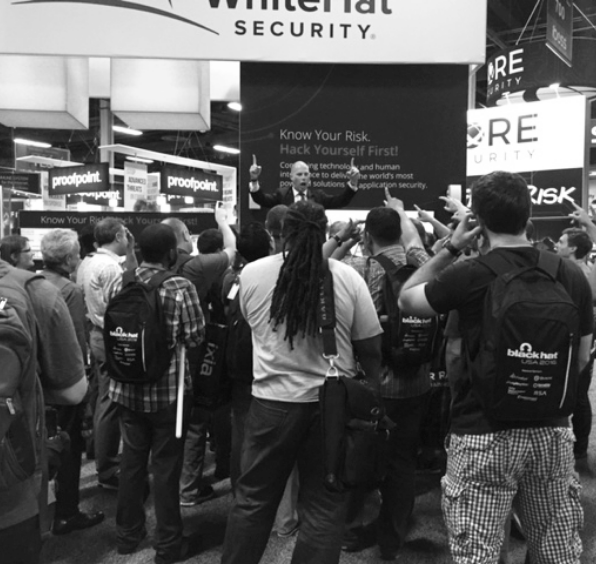As most exhibitor veterans know, attending multiple trade shows every year can take a toll on your budget. Exhibiting at a trade show is not a cheap endeavor, but with the right amount of preparation and planning, there are many ways to effectively cut your trade show costs and save an ample amount of money. Here are seven ways to cut your trade show costs – and still attract the right visitors and valuable leads.
1. Think long-term.
Many companies, especially in their first year at a trade show, make a big mistake when it comes to crafting their trade show booth display: they go with the cheapest option in order to save money. However, if you plan to attend trade shows for several more years, investing in a solid, good quality display the first time around will invariably save you money down the road. Anytime you have to add on to your original expo booth or even buy another display entirely, you’ll end up spending far more money long-term.
2. Pre-assemble and inspect your exhibit.
While it may seem like a lot of work to assemble the booth twice (in your own shop/home and then again on the trade show floor) this trade show planning step is a great cost-cutting measure. When you know exactly what to expect at the show in terms of how to set up your booth, you will save time and prevent unfortunate surprises.
And, as any trade show veteran knows, whenever there’s an issue on the show floor, it is painfully expensive to fix and there are usually no affordable solutions. Whether it’s overnighting graphics or getting a spare part the day before the show, everything is going to be more costly – and much more stressful. Make sure everything is in good shape before you ship your trade show booth to the show.
3. Utilize social media before the show.
In the months leading up to the trade show, generate buzz online by advertising your upcoming exhibit; after all, you can’t count on people to simply stroll up to your booth! Increase the chance of attendees and trade show booth ROI by marketing yourself on social media – Facebook, Twitter, Instagram, etc. These sites allow you to announce when and where you will be exhibiting, as well as help you find and network with other professionals who will be attending the event.
4. Bring your own supplies.
Show service providers often charge massive markups for inexpensive items that you may need the day of the show, such as electrical tape, surge protectors, cleaning supplies, trash cans, etc. It’s a good idea to buy and bring your own supplies; it’s much cheaper, and will allow you to skip the at-show markups.
Additionally, if you know you’ll be requiring other show services (things like carpet, electrical, internet, and rental furniture), order early. Most trade shows offer discounts the earlier you rent, but costs will substantially increase the day of the show.
5. Estimate your electrical needs properly (and try to cut back on the amount you need).
Many exhibitors pay for electricity they never use simply because they don’t know how to calculate how much they actually need. Eliminate the guesswork and invest in a power meter. Plug each of your electronic appliances into the meter, and it will tell you how much electricity each piece draws. Add up the total electrical usage for your equipment to determine how much you should order; doing so will save you potentially hundreds of dollars.
Additionally, try and determine if there is anything you can do without (excess lighting, unnecessary wiring, etc.) Not only is this a great way to self-audit your electrical usage, it’s also beneficial for figuring out where you can cut costs.
6. Go paperless.
Many trade show exhibitors waste a lot of time and money printing flyers or brochures to hand out during the show. Considering that, unfortunately, most of these papers end up in the trash rather than in the hands of a qualified lead, they can be serious budget busters.
Instead, go paperless with your marketing: ask leads for their email addresses, then offer to send them relevant product information after the event. Not only will this avoid the possibility of attendees losing your information, it’s also a great excuse for a follow-up after the trade show. Once you have a couple hundred emails collected, you can also start sending out e-newsletters to promote your next trade show event.
7. Invest in your trade show booth staff.
The selection, training, and execution of the right trade show booth staff is critical to your success. No matter how great your booth design or wonderful your marketing material is, none of it will matter if the people interacting with attendees do not appear knowledgeable, credible, attentive, and personable. As the face of the company, that first impression is everything.
Ensure that you have the most effective trade show personnel possible each time you exhibit. Whether you need to add some professional booth staff or hire trade show booth entertainment, it’s money well spent. Utilizing professionals whose speciality is increasing leads and impacting profits is always a sound investment.
Learn more about what a trade show magician or entertainer can do for your business. Our Trade Show Infotainers also offer Trade Show Booth Training and Trade Show Consulting to help you get the most out of your trade show exhibition.




